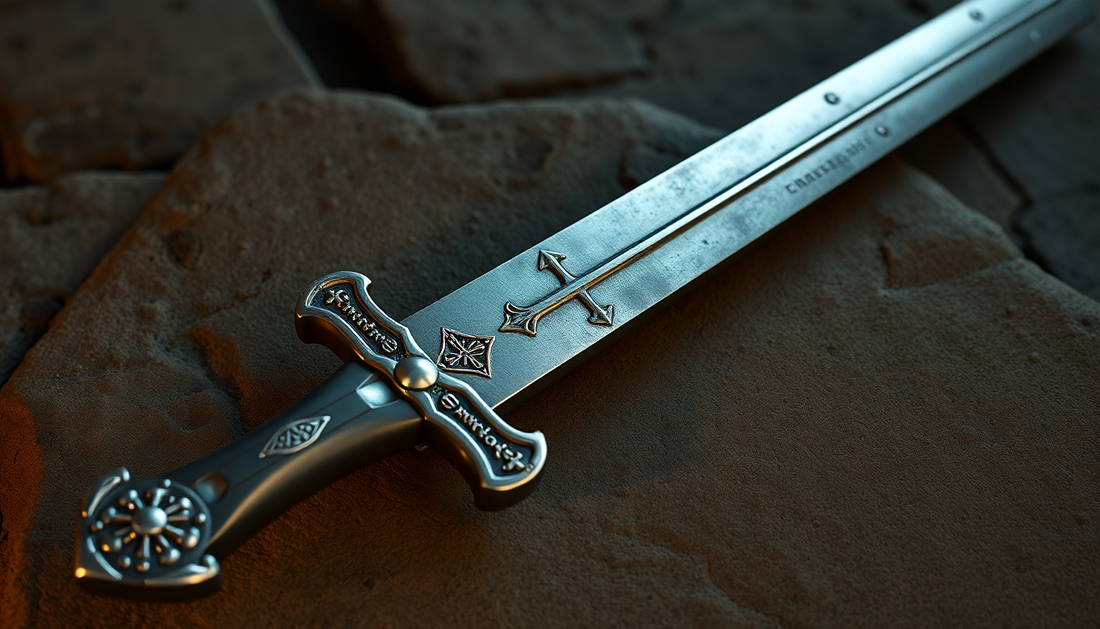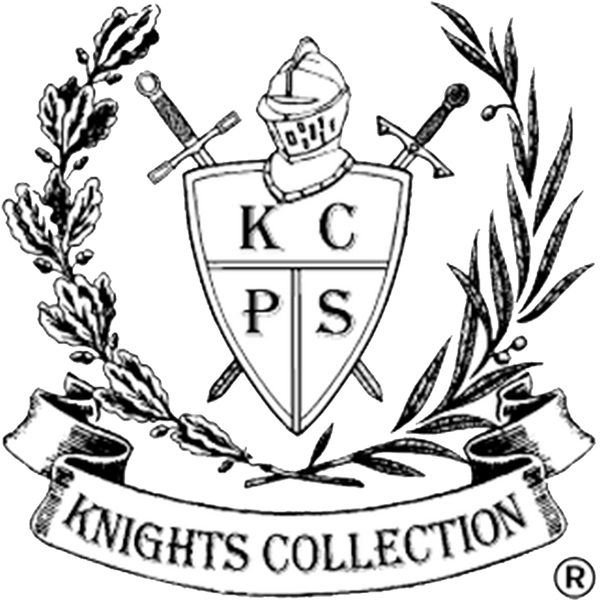
Knights Templar Swords: Meaning, Design, and Legacy
Share
The Knights Templar hold a special place in medieval history. Known as warrior monks, they played a pivotal role during the Crusades. Their medieval swords weren’t just weapons; these swords symbolized faith, power, and commitment. Today, knights Templar medieval swords continue to fascinate collectors, historians, and enthusiasts alike.
History of Templar Swords
Templar swords have roots deep in medieval times. Created during the sweeping age of the Crusades, these swords became iconic symbols of the Templar Order. Early Templar swords were influenced by the common knightly weapons but carried unique aspects tied to their religious mission.
Throughout history, Templar swords featured prominently in battles across Europe and the Holy Land. From the Siege of Acre to the defense of Jerusalem, knights wielded these swords with fierce dedication. Understanding Templar sword history reveals how their design and purpose evolved. Initially crafted for combat, they later came to embody spiritual significance for the order.
Design Features of Knights Templar Medieval Swords
Knights Templar medieval swords were crafted with both form and function in mind. Most featured a straight, double-edged blade typically ranging from 30 to 36 inches. The crossguard was simple yet elegant, often designed to resemble a cross—an obvious nod to their religious identity.
Materials used were high-quality steel or iron, with blades hand-forged by skilled blacksmiths. Handles typically wrapped in leather or wood ensured a solid grip during battle. The craftsmanship balanced durability and aesthetic appeal.
There’s a key difference between battle-ready swords and decorative replicas. The former prioritized strength and sharpness, built to withstand combat’s harsh conditions. Decorative swords, on the other hand, focus on intricate detailing. These often embellish the Templar cross symbolism and come with ornate hilts, catering more to collectors and reenactors.
Symbolism of the Templar Sword
The symbolism behind Templar swords runs deep. In medieval times, the sword was often more than a weapon; it was a symbol of authority and divine justice. For the Knights Templar, their swords represented their sacred mission to protect pilgrims and uphold Christian values.
The Templar cross symbolism, usually featured on the sword’s hilt or blade, was a powerful emblem. This red cross stood for martyrdom and sacrifice, reminding knights of their vows to serve both God and kingdom. This symbolism was not decorative alone; it influenced how swords were used in ceremonies and rituals.
Templar sword symbolism extended to design choices such as the crossguard’s form. The cross shape served as a constant reminder of the wearer’s religious path and their role as God's warriors. This blend of faith and warfare made the swords truly unique in the medieval period.
Role of Crusader Swords in the Templar Order
Crusader swords were the backbone of the Templar arsenal. These swords were essential during the Crusades, a series of religious wars aimed at reclaiming the Holy Land. Crusader swords had to be reliable and effective, given the brutal nature of medieval combat.
When compared to other crusader swords, knights Templar medieval swords stood out for their symbolism and craftsmanship. While many swords from the era served purely practical purposes, the Templar sword merged symbolism with utility.
The sword's role wasn’t limited to battle. It played a crucial part in religious ceremonies. Knights were often knighted or blessed with the sword, symbolizing purity and readiness to defend the faith. This dual use, both martial and spiritual, underscored the Templar Order's identity.
Collecting and Preserving Knights Templar Medieval Swords
Collecting genuine knights Templar medieval swords requires knowledge and care. Authentic swords from the era are rare, making it important to understand what to look for. Key features include hand-forged blades, signs of age, and authentic markings like the Templar cross.
Identifying genuine swords from replicas is not always easy. Replicas often use modern materials and manufacturing techniques. Look for craftsmanship details, patina, and historical documentation, which add credibility.
Proper care of medieval swords preserves their beauty and history. Store them in dry, controlled environments to prevent rust and damage. Regular cleaning with non-abrasive materials ensures the blade maintains its condition. For collectors, investing in specialist advice helps maintain both the sword’s integrity and value.
Conclusion
Knights Templar medieval swords are more than just weapons; they carry deep historical, symbolic, and artistic value. From their origins in the Crusades to their unique cross-shaped design, these swords tell stories of faith, battle, and dedication.
For those interested in authentic craftsmanship, exploring collections like those at Knight's Collection is rewarding. Whether you’re a collector, reenactor, or history enthusiast, owning a piece inspired by knights Templar medieval swords connects you to a powerful legacy.
The Templar sword legacy continues to inspire, reminding us of the blend between courage and faith. These swords remain timeless symbols worth preserving and celebrating.
